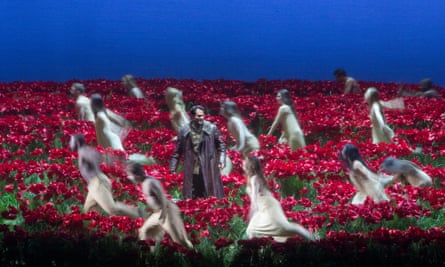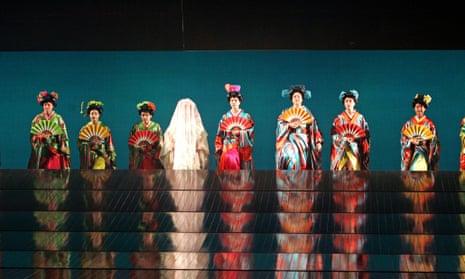There isn’t much gloss that you can put on the fact that the number of English National Opera shows has gone down from 16 last season (or 15 as it turned out, since a collaboration with Bristol Old Vic was cancelled) to 11 in the coming season. The company’s 2015-16 programme represents a cut of around a third in terms of productions, the result of the withering financial crises, drastic Arts Council cuts, last-ditch bailouts and all-round air of impending doom that has engulfed the company for the umpteenth time in its history for the last few months.
Instead of 2014-15’s tally of 11 new productions, there will be just six next year, as well as five revivals of evergreen classics from ENO’s recent and not-so-recent repertoire: Jonathan Miller’s venerable Mikado – still going strong, ENO hopes, after nearly 30 years – and Anthony Minghella’s Madam Butterfly. The company badly needs those home bankers (as well as The Magic Flute, The Barber of Seville and Jenůfa) to sell out, and sell out fast, to go some way towards offsetting the financial trials and tribulations by which it is beset (or with which it besets itself, depending on your take).

But if you’re going to limit your operatic damages, a programme like this could be the way to do it. The reduced roster looks like a distillation of the best parts of artistic director John Berry’s invention and ambition. The Anish Kapoor-designed production of Tristan and Isolde, with Stuart Skelton as Tristan and conducted by Edward Gardner, should have Wagnerians drooling in anticipation, while Phelim McDermott’s new version of Philip Glass’s Akhnaten will do the same for contemporary aficionados.
The other new shows are no less mouthwatering: the hugely exciting Russian director Dmitri Tcherniakov stages Shostakovich’s Lady Macbeth of Mtsensk for the opening opera of the season, and the incendiary, inspiring and, for some, infuriating Calixto Bieito returns to the Coliseum for Verdi’s The Force of Destiny. The perennial bums-on-seats winner of love and consumption that is Puccini’s La bohème, from the Australian theatre director Benedict Andrews, completes the lineup of new productions.

Just as significant as the onstage innovation is what’s happening in the orchestra pit. This season will be Mark Wigglesworth’s first as ENO’s music director. He’s coming into the job on the heels of the widely acclaimed Gardner, with the knowledge that the company is under the financial cosh and critical scrutiny as never before. His performances in the four shows he’s conducting will be crucial. But the signs are hopeful: even if its focus and concentration are the direct result of financial body-blows, this could be a season to remember for the right reasons at the Coliseum.

